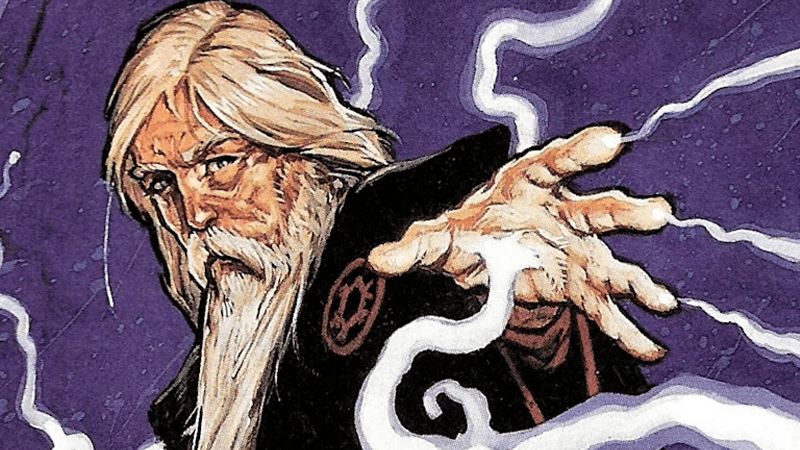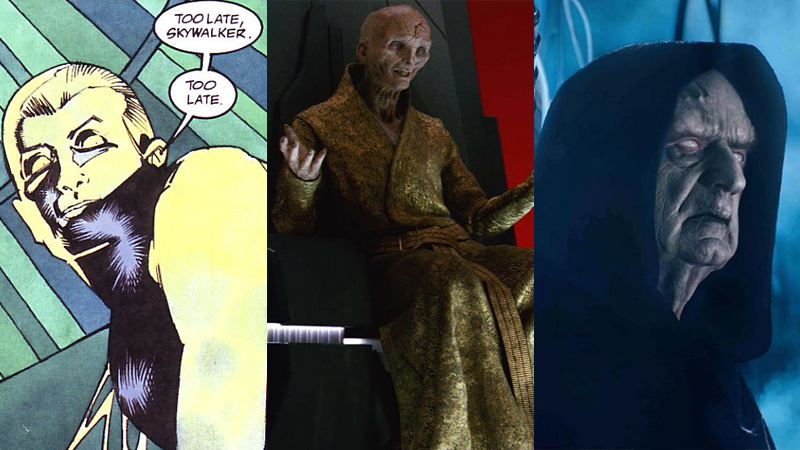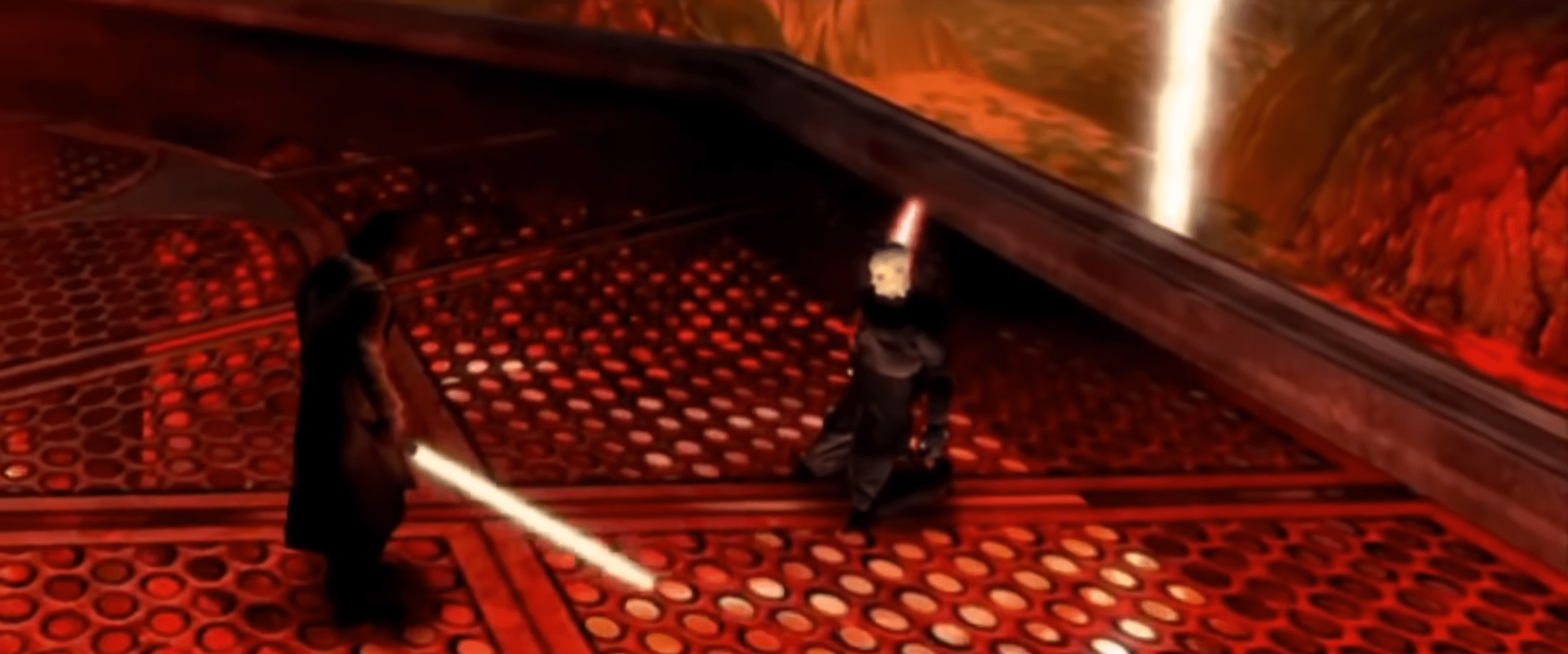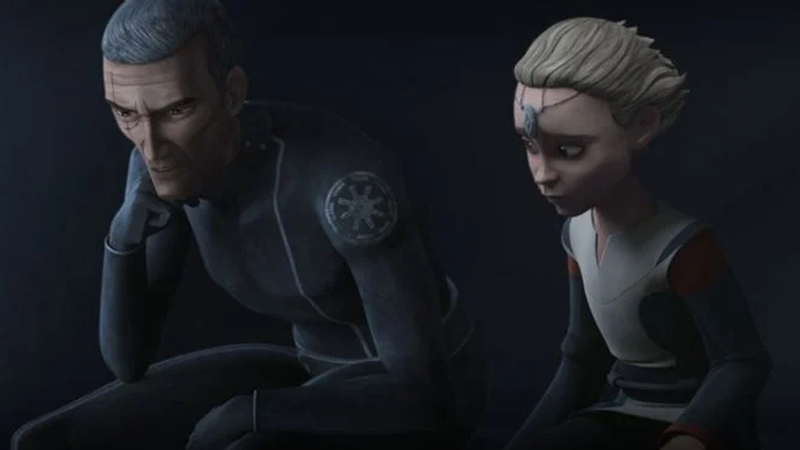Star Wars loves few things more than it loves clones. From grand armies to wars and a certain scrupulous senator from Naboo, cloning is as intrinsic to the saga as X-Wings, blaster pistols, and even the Force itself. But as we’ve delved further and further into the franchise, the mixing of this fascination with the power that binds its galaxy together has become more and more of a question: Can you actually have a Force-sensitive clone?
Well, yes — we’ve had several, in fact, not just in the movies but across Star Wars media, from the old Expanded Universe to the current Disney canon. Though it should be said, the idea of a Force-sensitive clone has become something of a fascination for the franchise more recently. The return of Emperor Palpatine in The Rise of Skywalker spun off threads everywhere from The Mandalorian to recent Star Wars comics (from a certain point of view) laying the groundwork for how such a thing could happen. But how much precedence is there for this in Star Wars anyway? Turns out, quite a bit.
Use the Force, Luuke

Well before the Clone War was transformed from Obi-Wan and Luke’s passing mention in A New Hope into a fundamental aspect of the Star Wars prequels, the ability to derive Force sensitivity from a natural wielder to a clone was a hot topic of discussion. In fact, not one, but two Jedi clones formed a major aspect of one of the earliest expansions in the ‘90s of what we would come to know as the Expanded Universe: Joruus C’boath, and Luuke Skywalker, who appeared in Thrawn creator Timothy Zahn’s Thrawn Trilogy: Heir to the Empire, Dark Force Rising, and The Last Command.
Joruus was a “Dark Jedi” cloned by Palpatine from a sample of the real Jedi Master of the same name (well, without the extra “u,” so just Jorus C’boath). Joruus had helmed a major interstellar exploration project called Outbound Flight almost a decade before the events of Revenge of the Sith — a ship filled with Jedi and Republic colonists hoping to travel beyond the unknown regions at the edge of Republic space and find extragalactic life.
The mission was ultimately a disaster, with the colony ship destroyed by the Chiss Ascendancy (at then-Chancellor Palpatine’s behest), but before its departure, each Jedi aboard had a genetic sample taken (also at Palpatine’s behest, because, y’know, Palpatine). Palpatine flash-cloned Joruus using a cloning technology different to the one we would ultimately see used by the Kaminoans to make the Republic’s clone armies in Attack of the Clones. While the Kaminoans spent a decade maturing and teaching clones as they aged at twice the average rate to maturity, the Spaarti cloning system used by Palpatine created fully-grown clones in a single year which made them highly susceptible to mental instability, and Joruus was no exception.

Tasked by Palpatine with guarding a repository of personal Dark Side artifacts and one of several of his private cloning facilities on the planet Wayland, Joruus eventually crossed paths with Grand Admiral Thrawn, and decided to work with him in his campaign to destroy the then-fledgling New Republic. Using his mastery of the Force and the rare ability of Battle Meditation — a meditative state that could mentally bolster allied forces on a massive scale, while debilitating foes — the Joruus clone was a major asset for Thrawn.
But he steadily grew more unstable and hungry for power, so Thrawn re-imprisoned him on Wayland, where he ultimately fought Luke Skywalker and the former Emperor’s Hand, Mara Jade. Joruus himself however wasn’t done with the whole Force-clone thing. After Jade and Skywalker refused to join him as agents of the Dark Side, Joruus revealed that he too had secretly made a Force-enhanced clone as his own apprentice: Luuke Skywalker, made from genetic material from Luke’s severed hand, recovered by Darth Vader after their duel on Bespin.
Wielding the Skywalker family lightsaber lost on Cloud City as well, Luuke and Joruus did battle with Luke and Mara, with the latter killing them both — seemingly ending the clone threat once and for all.
Sheev, Sheev, and Sheev Again

But Joruus was far from the only Force clone Palpatine had made. In fact, concurrently with the Thrawn trilogy’s antics, the Dark Horse comic series Dark Empire directly dealt with Palpatine making clone bodies for himself to transfer his spirit into. It’s shown — in a revelation so profoundly devastating that Luke briefly succumbs to the Dark Side as the reborn Emperor’s apprentice — that Palpatine lived for generations thanks to transferring his conscience and his powers into clone bodies, rendering him practically immortal.
However, it’s not a process he intended to use indefinitely; Palpatine’s ultimate plan in Dark Empire was to transfer his spirit into the unborn child of Leia Organa and Han Solo, utilising its own potential Force power as the grandchild of the Chosen One to sustain his own.
As weird as an idea it might seem, it’s one we’ve seen come over into the current Star Wars canon. Although The Force Awakens and The Last Jedi treated Supreme Leader Snoke’s origins as a mystery, The Rise of Skywalker revealed that Snoke was none other than a “Strandcast” clone made by Palpatine (in batches as an attempt to find a new shell for Palpatine’s spirit to return in).
While the Snoke clone’s genetic origin is unknown, Palpatine and his Sith Cultists did make multiple clones with Palpatine’s own genetic material, including Rey Skywalker’s father (who actually lacked the Force sensitivity the Sith needed), and the body encountered by Ben Solo on Exegol, itself eventually destroyed by Solo and Skywalker.
In Star Wars media since the movie, the retroactive establishment of Palpatine’s experimentation with Force-sensitive clones has cropped up in multiple places. An underlying theme in The Mandalorian’s second season, for example, is that the Imperial Remnant has been attempting to find Force-sensitive beings (like Grogu) to extract midi-chlorians from.
While we’ve yet to have explicit confirmation, the appearance of eerily Snoke-looking failed clones from this experimentation seem to at least imply that the program is done at the behest of Palpatine from beyond the grave. But Sheev or not, it’s still an example of Force-strong cloning being a concept alive and well in the current canon. Most recently, Marvel’s Darth Vader #11 took us to Palpatine’s secret Sith base on Exegol and heavily implied that, as he had in the old EU, he’d recovered Luke’s severed hand from Bespin to experiment on it. As a famous director once said, it’s like poetry, it rhymes.
The Clones That Could’ve Been

All this is pretty specific to Palpatine himself though, personal plans away from the main cloning powerhouse we’ve seen in the Skywalker Saga: the Kaminoans, and they’ve yet to have any explicit “canon” history with experimenting on Force sensitivity — outside of video games, that is. Battlefront III, the intended follow-up to the original Star Wars shooter series designed by Free Radical, was meant to include a story mode that followed two special clones in the aftermath of Order 66: X1 and X2.
Their story ultimately lived on in the handheld spinoff Battlefront: Elite Squadrons, revealing the X Clones not as enhanced Jango Fett descendants, but special clones crafted from genetic material harvested from Jedi Knight Falon Grey after the wounded Jedi was brought to Kamino for treatment as a padawan. Taking a gene sample without his consent, the Kaminoans developed X1 and X2, tasking them with keeping their Force abilities secret as they helped train the eventual Grand Army of the Republic, fighting alongside their Fett “brothers” in the Clone War.
With the destruction of the Jedi and the rise of the Empire, X1 and X2 went down different paths after a mission to hunt down a fugitive Jedi put them back in connection with Grey. X1, feverishly loyal to the Empire, executed Grey and wounded his brother after X2 chose to defect, horrified by the Empire’s willingness to murder civilians for harbouring a former Jedi. While X1 remained a powerful Imperial loyalist, even becoming a Sith himself after Palpatine’s death, X2 trained in the ways of the Force and eventually aided the Rebellion as both soldier and Jedi, surviving the conflict long enough to become a Jedi Master in Luke Skywalker’s rebuilt Order.
X1 and X2 weren’t the only gaming stars to brush up with the Kaminoans, either. The premise for The Force Unleashed II saw Darth Vader use Kaminoan cloning facilities to recreate the first game’s protagonist, Galen Marek, after Marek sacrificed himself to save the founders of the Rebel Alliance in the first game’s climax. Dubbed Subject 1138, the Marek clone players use in Force Unleashed II experienced similar mental instability to flash clones like Luuke and Joruus, imprinting on Marek’s memories of his lover, former Imperial agent Juno Eclipse. Cast aside by Vader as a failure, 1138 took on Marek’s identity and ultimately joined the Rebellion — however, with the series’ cancellation, he was never seen again.
The Omega Connection

That brings us to Omega and Disney+’s Star Wars: The Bad Batch. The latest Lucasfilm animated series, spinning off from the titular squad’s debut in The Clone Wars, introduces us to the young clone, part of the same abnormal batch of Jango Fett clones that created our elite soldier heroes. Omega’s primary “defect” as seen so far is that she is female, but the series has, in ways subtle and overt, hinted that there is perhaps more to her than we know. Omega has been shown to be adept at mimicry of the people around her, not just in terms of action but empathically as well.
In some moments, she’s been able to vaguely understand what is about to happen to someone — like when she comforts Crosshair as he’s about to be taken off to have his inhibitor chip ramped up in the series premiere.
To some, Omega’s abilities are a mystery to unravel, and these hints tease that perhaps Omega’s cloning is a direct result of trying to breed Force sensitivity within the clone army. While we know her genetic template is Jango Fett and not Palpatine, it’s not like the Kaminoans haven’t had access to Force sensitives during the Clone War — Jedi fought and died there defending the homeworld of their armies, so midi-cholorians aplenty were within reach.
Given that in The Bad Batch the Kaminoan government has expressed value in Omega as its potential future after the Empire makes it clear it will renege the Republic’s deal to make clone troopers, experimenting with recreating Jedi through the material they already had may be a logical next step. Time will tell whether or not Omega’s abilities will just be enhanced senses like her brothers in the Batch, or part of a wider plan we’ve seen Star Wars touch on in the movies.
If there is more to her than it seems, then as we said before: it wouldn’t be the first time Star Wars has experimented with cloning and the Force as we think we know it.
